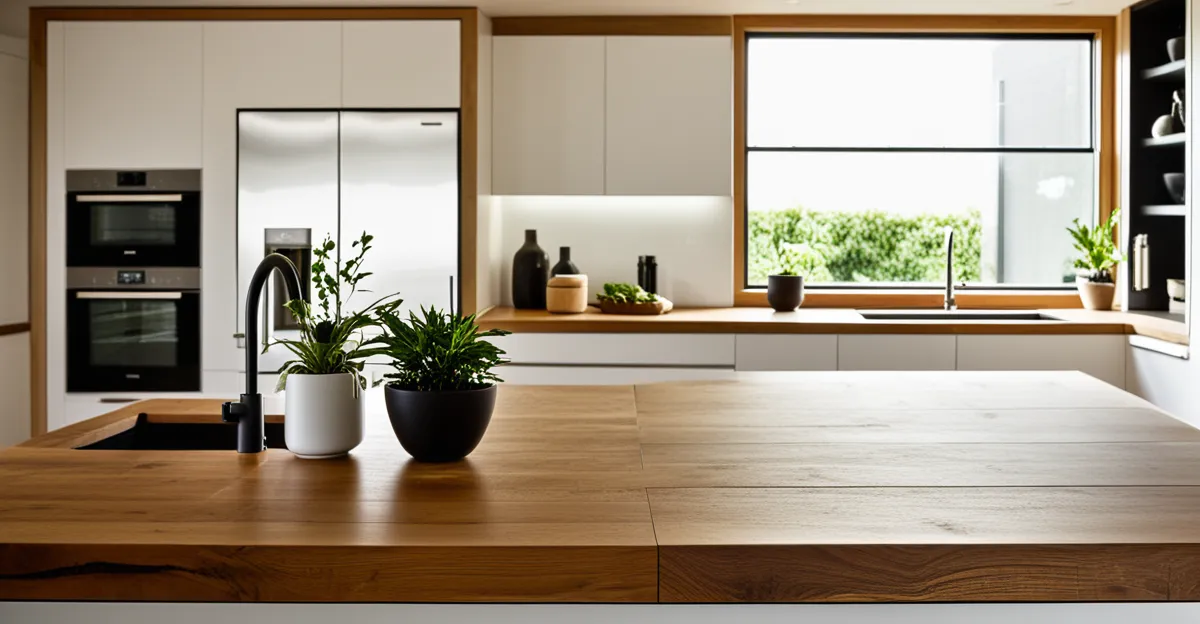Practical Steps for Sustainable Home Decor
Taking active steps toward sustainable home decor begins with thoughtful decision-making focused on environmental responsibility. When choosing materials and products, prioritize those made from renewable resources such as bamboo, cork, or reclaimed wood. These options reduce reliance on finite resources and often come from eco-friendly harvesting methods.
Quality and durability should be central to your choices. Investing in well-crafted items means less frequent replacements, reducing waste and environmental impact over time. This approach aligns with eco-friendly decorating principles by minimizing consumption.
Also read : How Can You Make Your UK Home Feel More Spacious?
Another powerful method is reusing and repurposing what you already have. Upcycling furniture or decor not only gives old items a new life but also prevents them from ending up in landfills. Projects like repainting or refinishing existing pieces merge sustainability with creativity, offering unique, personalized touches.
By combining these strategies—selecting sustainable materials, emphasizing quality, and incorporating reuse—you create a home that reflects your commitment to eco consciousness without compromising style or comfort. Such actionable tips develop a foundation for sustainable living that’s practical and rewarding.
Also to read : How Can Home Decor Choices Impact Your Quality of Life?
Sustainable Materials and Product Choices
When focusing on sustainable materials, select options like bamboo, reclaimed wood, and natural fibres that have minimal environmental impact. These materials support eco decor products by promoting renewable resources and responsible harvesting. Avoid items made from non-renewable or heavily processed substances to adhere to eco-conscious shopping principles.
Opting for furniture and accessories from certified green brands ensures you are choosing products verified for sustainability, reducing your carbon footprint. Certifications can provide assurance that the materials are responsibly sourced and manufactured.
Another critical factor is to avoid toxic finishes commonly found in conventional decor. Choose products using non-toxic paints and glues to promote indoor air quality and reduce harm to human health. These eco-friendly decorating choices contribute significantly to creating a healthy home environment.
Focusing on materials and products with these guidelines creates a strong foundation for sustainable home decor. Prioritizing eco decor products that align with your values equips you with actionable tips to continue refining your living space with an eye on longevity and environmental responsibility. This approach is fundamental for lasting, mindful eco-friendly decorating practices.
Practical Steps for Sustainable Home Decor
When aiming for sustainable home decor, start by choosing materials and products that are truly environmentally responsible. This means opting for items made from renewable or recycled resources, ensuring each purchase supports long-term ecological balance. Prioritising quality and durability is equally crucial; selecting well-crafted decor reduces waste by preventing frequent replacements, a key aspect of eco-friendly decorating.
Reusing, repurposing, and upcycling existing home items offers not only a creative outlet but also a practical path to sustainability. For example, transforming an old wooden chair with fresh paint or fabric revitalises furniture, preventing it from joining landfill piles. These actions are amongst the most effective actionable tips for making your decor both stylish and sustainable.
When implementing these practices, focus on the lifecycle of your home items. Durable pieces paired with creative reuse strategies build a foundation for a truly sustainable living environment. Combining these elements allows you to confidently incorporate sustainability without compromising design or comfort. Recognising these important steps empowers any homeowner striving for eco-consciousness in their home decor choices.
Practical Steps for Sustainable Home Decor
Choosing sustainable home decor starts with selecting materials and products grounded in environmental responsibility. Prioritise items made from renewable or recycled resources, as they reduce environmental impact and support eco-friendly manufacturing. These choices form the backbone of meaningful eco-friendly decorating.
Quality is essential. Well-crafted pieces last longer, reducing the frequency of replacements and contributing to waste reduction. Investing in durability aligns with sustainable living goals by conserving resources over time. Always consider the lifecycle of your decor items for true sustainability.
Reusing, repurposing, and upcycling existing home items are some of the most effective actionable tips for sustainable decor. For instance, refreshing an old dresser with eco-friendly paint or reinventing fabric for cushions can breathe new life into furniture, avoiding landfill waste. These creative approaches make sustainability accessible and stylish.
Incorporating these practical steps ensures your decor choices reflect a genuine commitment to the environment. Sustainable home decor need not sacrifice aesthetics or comfort when guided by conscious, informed decisions.
Practical Steps for Sustainable Home Decor
When embarking on sustainable home decor, selecting environmentally responsible materials is paramount. Choose products crafted from renewable or recycled resources, as these reduce environmental impact and support long-term ecological balance. This practice forms the cornerstone of conscientious eco-friendly decorating.
Prioritising quality and longevity ensures every piece lasts, which decreases waste generated by frequent replacements. Durable decor saves resources over time and aligns with sustainable living’s core values. Key actionable tips include evaluating the lifecycle of each item before purchase to maximize its utility and eco-value.
Another essential step is reusing, repurposing, and upcycling existing home items. Instead of discarding, creatively refreshing old furniture or decor items — such as repainting or reupholstering — extends their lifespan and avoids landfill waste. These methods marry sustainability with personal style, offering unique, eco-conscious design.
Combining these approaches—responsible materials, lasting quality, and innovative reuse—empowers homeowners to create spaces that reflect genuine environmental commitment without sacrificing aesthetic appeal or comfort. These practical steps are foundational to effective, stylish, and truly sustainable home decor.
Practical Steps for Sustainable Home Decor
Choosing sustainable home decor starts with selecting environmentally responsible materials and products that reduce ecological footprints. Prioritise items made from renewable, recycled, or naturally sourced elements. This reduces demand on finite resources and supports eco-friendly manufacturing methods.
Focusing on quality and longevity is crucial. Durable decor pieces last longer, preventing frequent replacements and minimizing waste. Assessing the lifecycle of products before purchasing ensures better value and a more sustainable investment. High-quality items may initially cost more but save resources and effort over time.
Reusing, repurposing, and upcycling are powerful actionable tips for sustainability. Instead of discarding old furniture or decor, refresh them through repainting, reupholstering, or creatively modifying their use. These methods extend the life of items, reduce landfill waste, and add unique character to your space.
Combining these approaches—environmentally responsible sourcing, prioritising longevity, and resourceful reuse—builds a foundation for effective, stylish, and truly eco-friendly decorating. This holistic strategy empowers homeowners to create spaces reflecting authentic environmental commitment without sacrificing comfort or design.
Practical Steps for Sustainable Home Decor
Choosing sustainable home decor means focusing on environmentally responsible materials and products that reduce ecological impact. Opt for items crafted from renewable, recycled, or natural resources, which are central to effective eco-friendly decorating. These choices help conserve finite materials and support sustainable manufacturing.
Prioritising quality and longevity is critical. Durable pieces not only last longer but also reduce frequent replacements, which cuts down on waste. Evaluating a product’s entire lifecycle before purchasing offers valuable actionable tips to make better long-term investments. Though high-quality items can cost more upfront, they provide greater sustainability by conserving resources and minimizing landfill contributions.
Reusing, repurposing, and upcycling existing furniture and decor effectively extend item lifespans. This includes repainting, reupholstering, or creatively adapting old pieces, which reduces waste and creates unique, personalised elements. These strategies combine style with environmental responsibility, making sustainability accessible and engaging.
By integrating responsible sourcing, durable selection, and clever reuse, homeowners take definitive, practical steps toward authentic sustainable home decor without sacrificing aesthetic or comfort.




